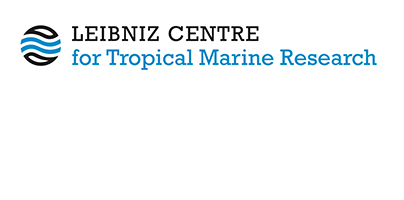Simulating potential impacts of bottom trawling on the biological carbon pump: a case study in the Benguela Upwelling System.
Siddiqui, Claire, Rixen, Tim  ORCID: https://orcid.org/0000-0001-8376-891X, Lahajnar, Niko, Lamont, Tarron and van der Plas, Anja K.
(2024)
Simulating potential impacts of bottom trawling on the biological carbon pump: a case study in the Benguela Upwelling System.
Frontiers in Marine Science, 11
.
DOI https://doi.org/10.3389/fmars.2024.1387121.
ORCID: https://orcid.org/0000-0001-8376-891X, Lahajnar, Niko, Lamont, Tarron and van der Plas, Anja K.
(2024)
Simulating potential impacts of bottom trawling on the biological carbon pump: a case study in the Benguela Upwelling System.
Frontiers in Marine Science, 11
.
DOI https://doi.org/10.3389/fmars.2024.1387121.
|
Text
Siddiqui.pdf - Published Version Available under License Creative Commons: Attribution 4.0. Download (1MB) |
Abstract
Bottom-trawl fishery is known to cause major disturbances to marine sediments as the dragging of trawl gears across the seabed fosters sediment resuspension, which can lead to organic particle remineralization and release of benthic CO2 and nutrients into bottom waters. However, its effects on carbon cycling and biological productivity, especially in highly productive regions like the Benguela Upwelling System (BUS), are less well studied. Here, we simulated carbon (C) and nutrient pathways from the trawled coastal seabed to overlying water masses that are being upwelled into the sunlit surface within the BUS, using shipboard data on sea surface and water column characteristics and published benthic CO2 emission estimates from bottom-trawled sediments. The latter reports 4.35 and 0.64 Tg C year-1 to be released from the seabed into upwelling source waters after bottom trawling in the northern (NBUS) and southern (SBUS) subsystems, respectively. Based on these values, we estimated a corresponding nitrate (N) input of 1.39 and 0.47 µmol kg-1 year-1, enhancing source water nitrate concentrations by ~5% and ~2%. Trawl-induced nitrate input into the sunlit surface could support a new production of 3.14 and 0.47 Tg C year-1 in the NBUS and SBUS, respectively, recapturing only 2/3 of CO2 released after bottom trawling into biomass, mainly due to differences in stoichiometric C:N ratios between the sediment (~9) and surface biomass (Redfield, 6.6). The remaining benthic CO2 can thereby lead to an increase in surface CO2 concentration and its partial pressure (pCO2), impeding CO2 uptake of the biological carbon pump in the BUS by 1.3 Tg C year-1, of which 1 Tg C year-1 is emitted to the atmosphere across the northern subsystem. Our results demonstrate the extent to which bottom trawling may affect the CO2 storage potential of coastal sediments on a basin-wide level, highlighting the need to better resolve small-scale sediment characteristics and C:N ratios to refine trawl-induced benthic carbon and nutrient effluxes within the BUS.
| Document Type: | Article |
|---|---|
| Programme Area: | PA2 |
| Research affiliation: | Biogeochemistry and Geology > Carbon and Nutrient Cycling |
| Refereed: | Yes |
| Open Access Journal?: | Yes |
| DOI: | https://doi.org/10.3389/fmars.2024.1387121 |
| ISSN: | 2296-7745 |
| Date Deposited: | 06 Jan 2025 13:00 |
| Last Modified: | 06 Jan 2025 13:00 |
| URI: | https://cris.leibniz-zmt.de/id/eprint/5498 |
Actions (login required)
 |
View Item |





 Tools
Tools Tools
Tools